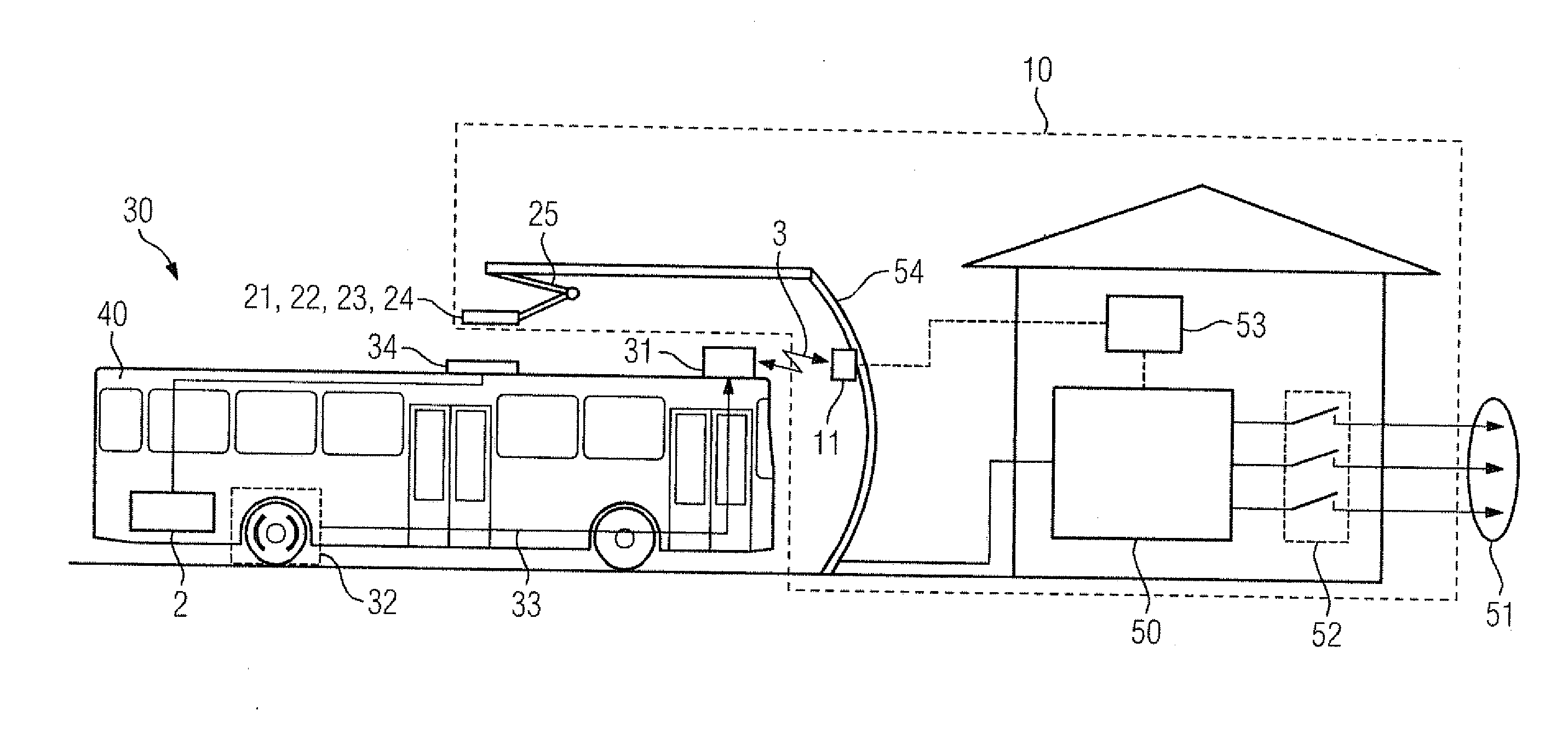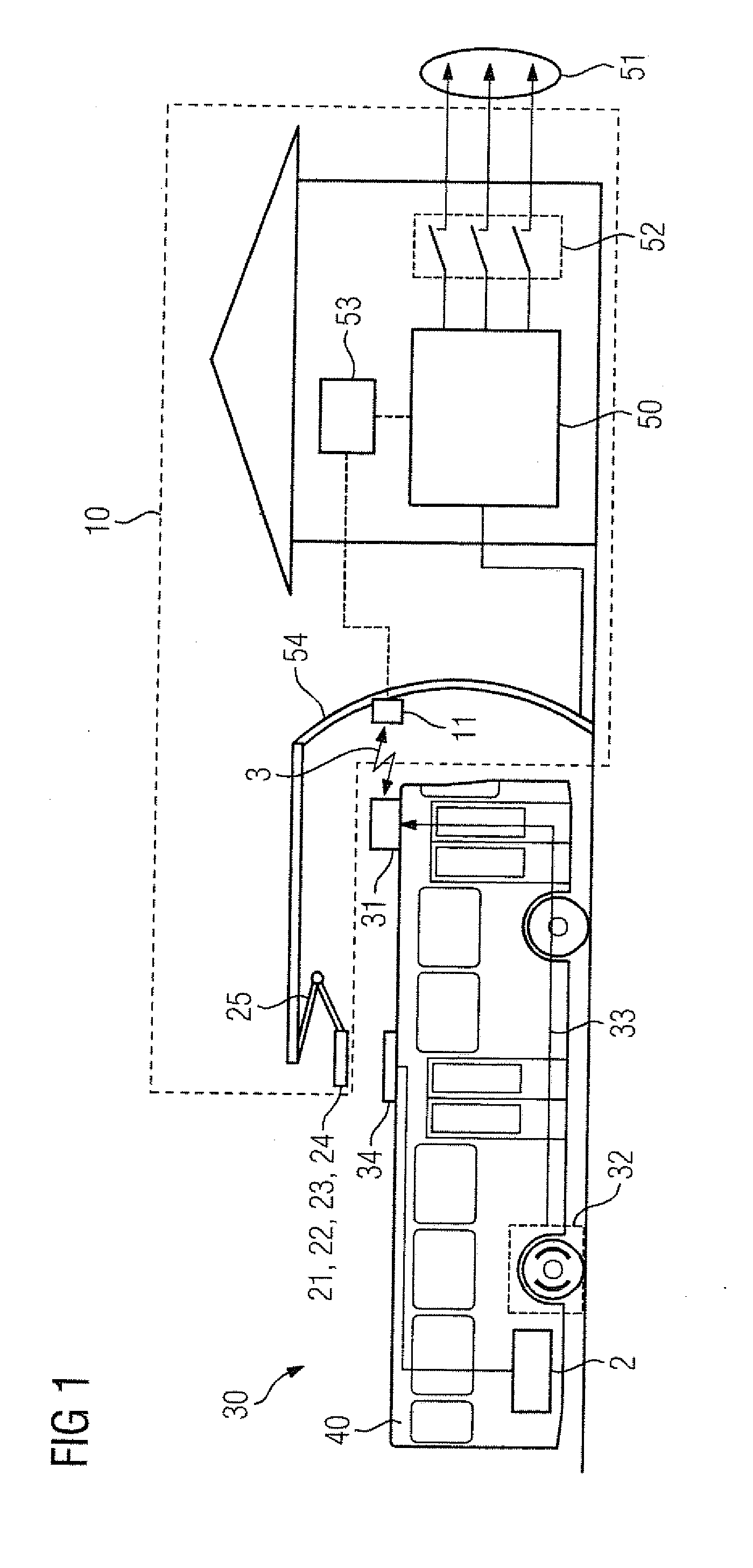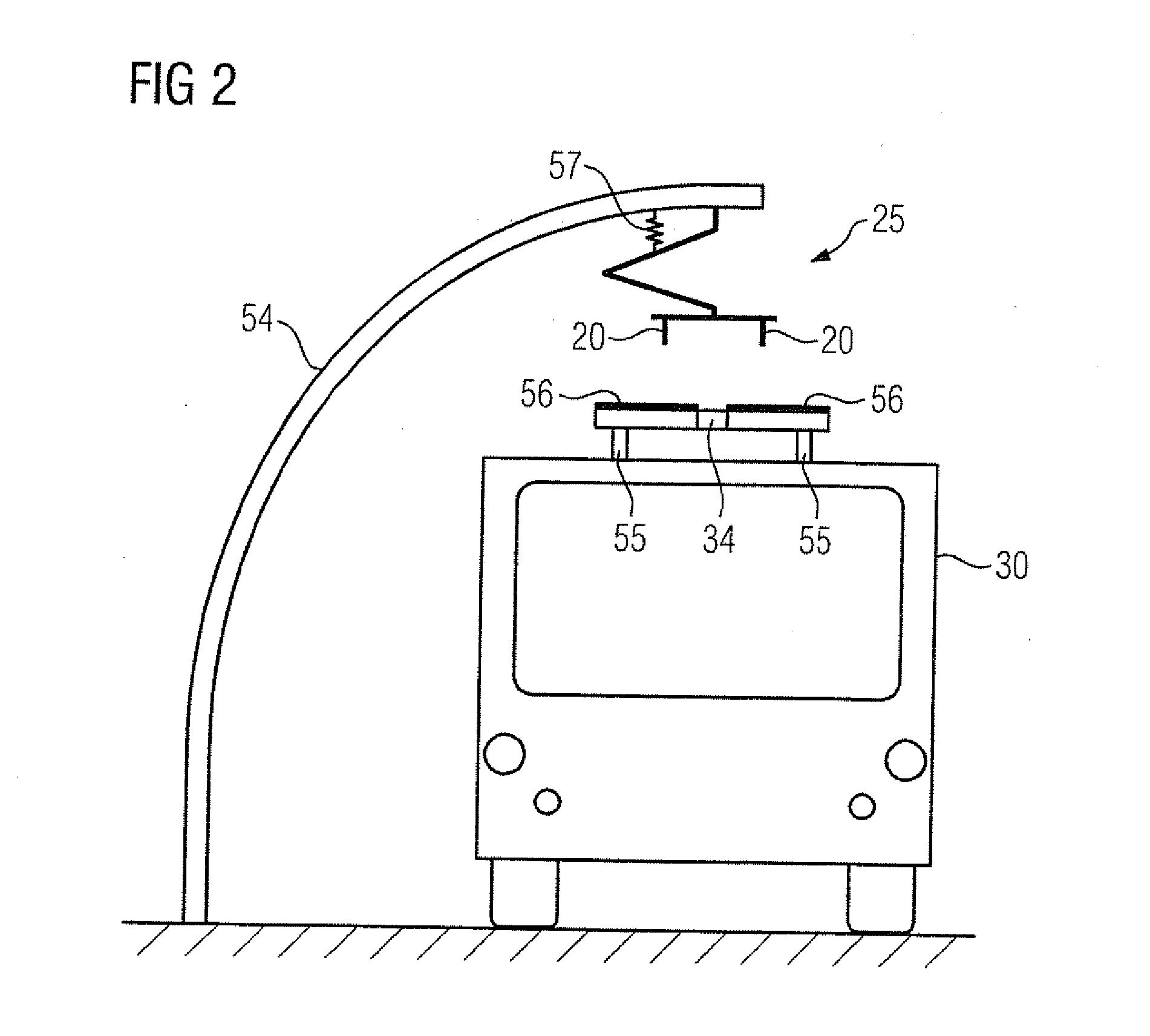Charging method for an energy accumulator of a vehicle
a charging method and energy accumulator technology, applied in the direction of charging stations, electric vehicle charging technology, transportation and packaging, etc., can solve the problems of not having an energy accumulator on board, long distances to be covered without external supply, and no charging stations that satisfy the need of such vehicles, etc., to eliminate the need for sensors, detect the standstill of the vehicle, and implement easily and cost-effectively
- Summary
- Abstract
- Description
- Claims
- Application Information
AI Technical Summary
Benefits of technology
Problems solved by technology
Method used
Image
Examples
Embodiment Construction
[0033]Throughout all the figures, same or corresponding elements may generally be indicated by same reference numerals. These depicted embodiments are to be understood as illustrative of the invention and not as limiting in any way. It should also be understood that the figures are not necessarily to scale and that the embodiments are sometimes illustrated by graphic symbols, phantom lines, diagrammatic representations and fragmentary views. In certain instances, details which are not necessary for an understanding of the present invention or which render other details difficult to perceive may have been omitted.
[0034]Turning now to the drawing, and in particular to FIG. 1, there is shown a schematic illustration of a system with a vehicle 30 in the form of a bus with an energy accumulator 2 and a charging station 10. The charging station 10 has a mast 54 to which a current collector 25 is attached. The contacts 21, 22, 23, 24 of the charging station 10 can be placed in contact with...
PUM
 Login to View More
Login to View More Abstract
Description
Claims
Application Information
 Login to View More
Login to View More - R&D
- Intellectual Property
- Life Sciences
- Materials
- Tech Scout
- Unparalleled Data Quality
- Higher Quality Content
- 60% Fewer Hallucinations
Browse by: Latest US Patents, China's latest patents, Technical Efficacy Thesaurus, Application Domain, Technology Topic, Popular Technical Reports.
© 2025 PatSnap. All rights reserved.Legal|Privacy policy|Modern Slavery Act Transparency Statement|Sitemap|About US| Contact US: help@patsnap.com



